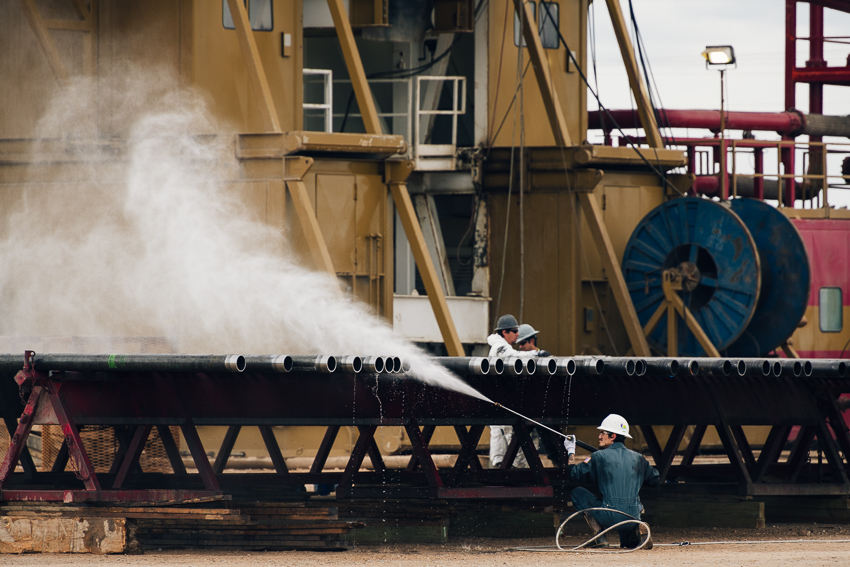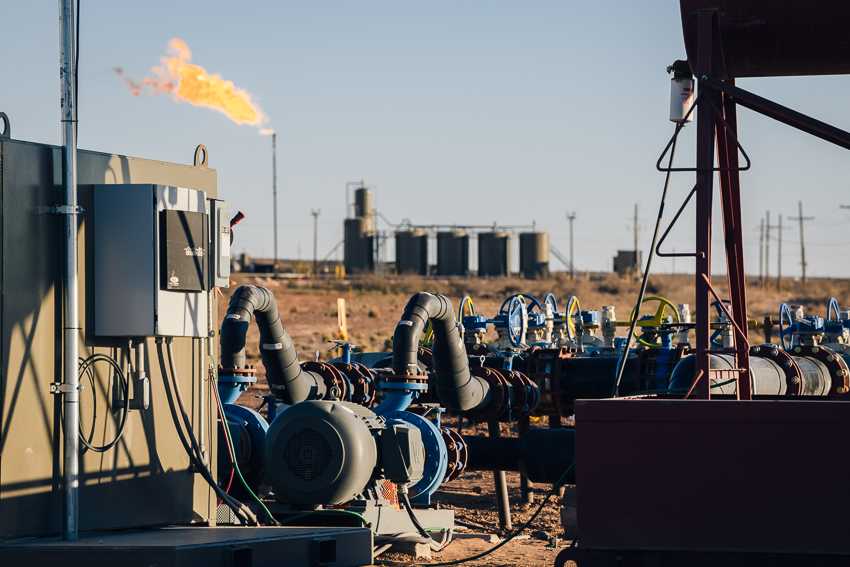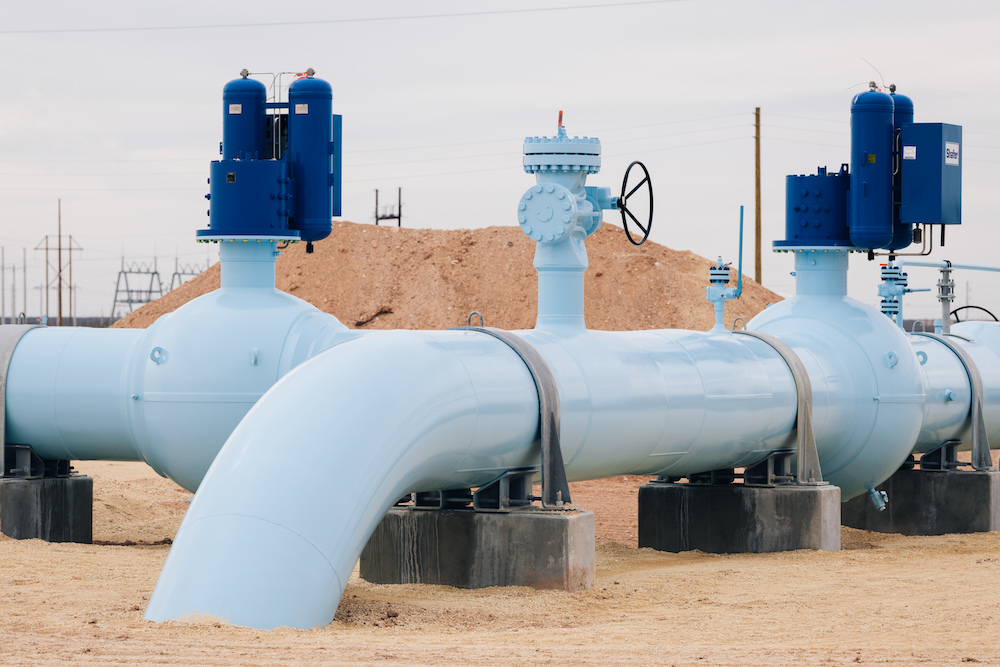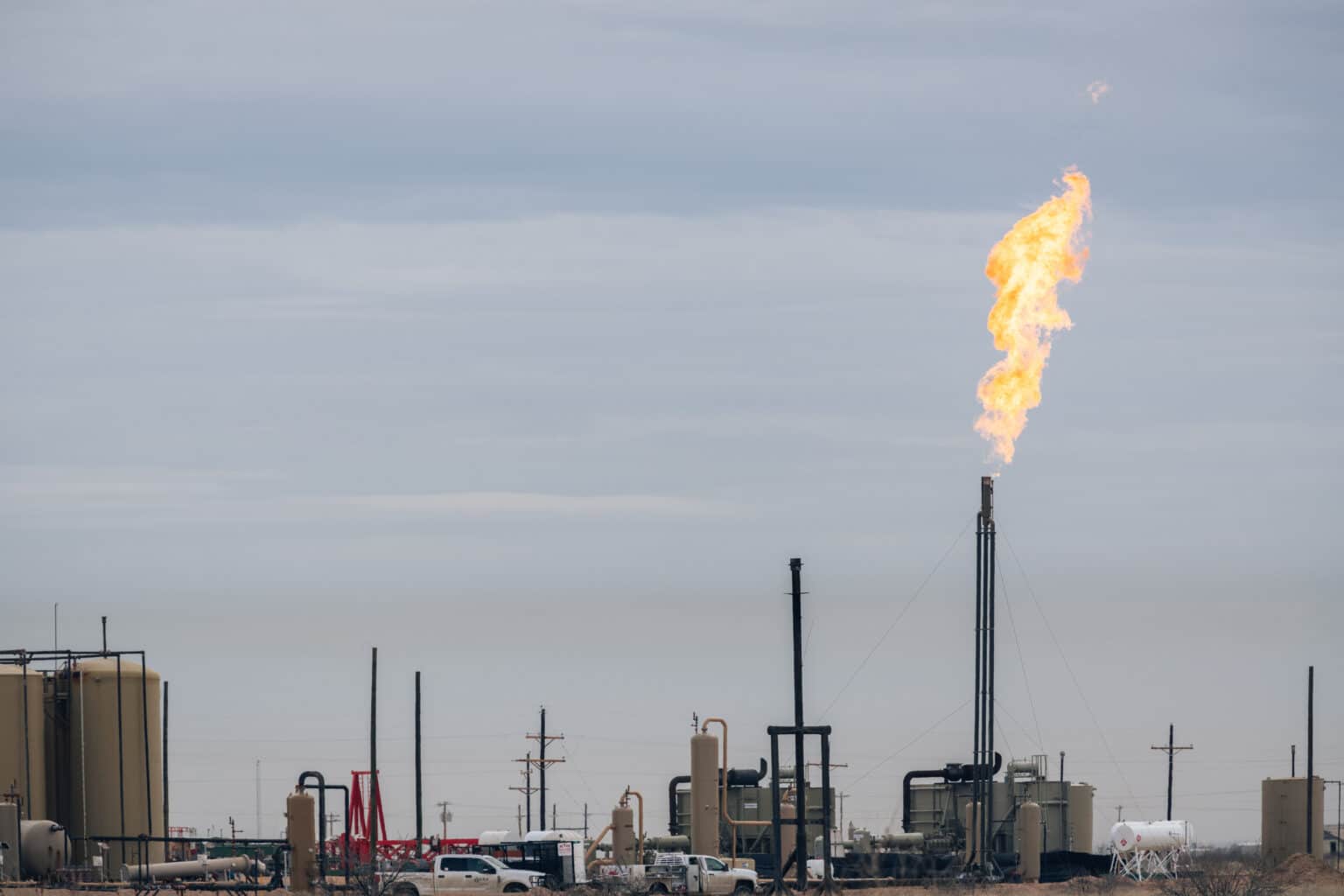Only a handful of super emitters are responsible for an enormous amount of the methane pollution in the Permian basin, according to a new study. And ratcheting down these emissions can lead to quick and significant wins for the climate.
According to the study published on June 2 in the journal Environmental Science & Technology Letters, a relatively small number of sites — 11 percent — account for nearly a third of methane emissions in the region. Methane is a highly potent greenhouse gas — more than 80 times more powerful than carbon dioxide over a 20-year time-frame.
Between September and November 2019, a team of scientists from the NASA Jet Propulsion Laboratory, the University of Arizona, and Arizona State University, conducted aerial flights over the Permian basin, using sensors to detect methane plumes, tracing them back to specific emitters. The researchers found that roughly half of all the methane was escaping from drilling sites, and the other half from pipelines and processing facilities, indicating a slightly larger pollution footprint for pipelines compared to other regions.
The findings come at the same time as a separate study from Ceres and Clean Air Task Force, published on June 1, which found that some smaller oil drillers in the Permian basin have worse methane pollution rates than the largest oil and gas companies’ operations there, including ExxonMobil and Chevron.
Slashing methane emissions represents prime targets for climate action. But while the solutions are well-known, researchers and legal experts told DeSmog that state regulators have done very little to compel the industry to clean up.
Methane “super-emitters represent potential ‘low-hanging fruit’ for near-term climate action,” Riley Duren, a research scientist at the University of Arizona and NASA’s JPL, and one of the authors of the report in Environmental Science & Technology Letters, wrote in an email.

“The mitigation potential for those 120 facilities is significant: over 50 metric tons of methane per hour. That’s equivalent to about 5% of the U.S. Environmental Protection Agency’s estimates of all methane emissions from oil and gas production in the entire United States,” Duren wrote.
He added that another significant finding of the study was that even among big emitters, the rate of methane released into the atmosphere fluctuated, suggesting a need for more frequent monitoring using remote-sensing of large areas from satellites and aircraft. “Bottom-line: the true state of methane emissions remains obscured by inaccurate and incomplete data. This is why we need direct, science-based measurements for complete situational awareness and to guide timely action,” he wrote.
The solutions to this major source of pollution have been known for quite a while, said David Spence, a business professor at the University of Texas at Austin School of Law. “Everybody agrees that methane leakage is a relatively easily solvable problem compared to other problems that we face,” Spence told DeSmog, commenting on the new studies. “These are really practical and easy to understand problems that are easily fixable. The fixes are like the equivalent of caulking your window, things like that. There’s no technological breakthrough needed in order to fix these problems. It’s just a question of doing it.”
Plugging leaks and eliminating venting and flaring would result in a huge and immediate climate benefit. “It’s the lowest hanging fruit you can get for climate change. And the market is demanding it,” Jacqueline Weaver, a professor emeritus at the University of Houston Law Center, told DeSmog, agreeing with the takeaway of the new methane studies.
She pointed to the escalating pressure from investors and market participants agitating for lower emissions, particularly from runaway flaring in the Permian. ExxonMobil just lost a high-profile board fight, largely over its inadequate plans for energy transition. Chevron saw its shareholders vote to force the company to come up with a plan for handling scope 3 emissions (the emissions burned by the company’s customers and end consumers). And a Dutch court ordered Royal Dutch Shell to cut its emissions by 45 percent by 2030, a landmark decision that points to increasing legal threats for the oil industry.
More directly related to the dirty reputation of oil and gas from West Texas, Weaver pointed to the decision by France’s Engie to back out of an LNG deal last year over concerns about methane pollution. “A lot of forces have come to act on the big guys,” Weaver said.
As the Ceres and Clean Air Task Force report demonstrated, the worst offenders are smaller companies. Weaver said they don’t prioritize capturing methane, and they don’t feel the same pressure as the big oil companies. “The regulations don’t force it. And with small companies they are not answerable to institutional investors and shareholders,” she said.
Enforcement would largely need to come from the Texas Railroad Commission (RRC), which regulates the oil and gas industry in the state. But the RRC has not only refused to meaningfully regulate drillers, but has at times ostentatiously denounced “woke” radical environmentalists. In reality, the RRC has issued thousands of flaring permits and has never denied a single one.
“They’re extremely adverse to doing anything that will injure the oil and gas industry,” Weaver said. “And they’re especially beholden to the small operators. And this has been true for a century.” Because the Railroad Commission is elected, they have to curry favor with the long list of small oil and gas companies in the state.

“It would be inaccurate to state that RRC does not adhere to its critical mission to protect public safety and the environment, of which flaring regulation is one of many functions,” Andrew Keese, a spokesperson for the RRC, told DeSmog via email. He pointed to a revision the RRC made to flaring permit applications last year, which asks for more information from drillers and offers guidance on when and how to flare, but adds no new requirements. The RRC has not rejected any permits or otherwise sought to crackdown on flaring, venting, and other methane leaks.
“You can say it’s a major step for them, but it’s a step that’s coming from industry and in many ways, most environmentalists would say it’s pathetic,” Weaver said, referring to the new requests for more information by the RRC. “But it is a signal that they realize that there is a problem out there.”
Weaver said that historically, Texas regulators have been spurred into action often only after the federal government threatens to intervene. Federal action, plus growing pressure from global investors, could begin to force change on methane. “You need these external forces to work on the Railroad Commission,” she said.

DeSmog previously reported on the likelihood that the oil industry was flaring large volumes of gas in West Texas without even obtaining permits. Some of the flares are unlit or malfunctioning, resulting in more methane vented into the atmosphere.
Not only would cleaning up the epidemic of methane pollution in the Permian result in immediate climate benefits, but the cost to the industry would be next to nothing. A study from earlier this year from EDF and Rystad Energy found that 84 percent of routine flaring volumes could be eliminated at no added cost to the industry. Captured gas could be sold, offsetting the cost of compliance.
It would also employ a lot more people. “The wonderful thing about stopping flaring is that there are a lot of good jobs out there,” Weaver said. “Give them a wrench and have them go tighten the valves.”
She added that some of the smallest and worst actors might be forced out of the market, but the job impact would not be substantial as more responsible oil companies would buy up their assets. “There are some operators who shouldn’t be in business. They can’t run their business cleanly,” Weaver said. “That’s one of the great things about capitalism. If you can’t clean up your act enough, you shouldn’t be in business.”
Subscribe to our newsletter
Stay up to date with DeSmog news and alerts







